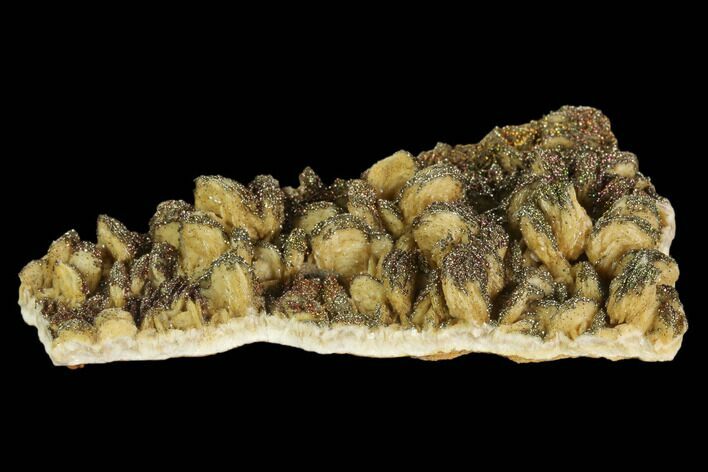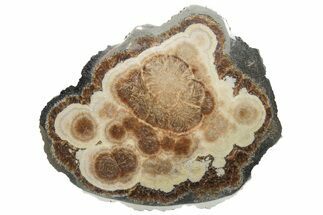This Specimen has been sold.
3.8" Pyrite Encrusted Barite Crystal Cluster - Poland (New Find)
This is a beautiful cluster of barite (baryte) crystals that are encrusted in pyrite micro-crystals, collected from a pocket of Poland's famous Lubin Mine, known as "Rutyna's Pocket". The barite displays a deep honey coloration with little to no damage to the majority of the crystals on this specimen. It comes with an acrylic display stand.
The Lubin Mine in Poland has been around since the early 1960's and is known as one of the largest copper and silver ore producers in the world. Occasionally, varieties of minerals make it out of this mine and onto the market; this gorgeous pyrite encrusted baryte specimen being one of those.
The Lubin Mine in Poland has been around since the early 1960's and is known as one of the largest copper and silver ore producers in the world. Occasionally, varieties of minerals make it out of this mine and onto the market; this gorgeous pyrite encrusted baryte specimen being one of those.
About Barite (Baryte)
Barite is a barium sulfate mineral (BaSO₄) known for its high specific gravity, which makes it unusually heavy for a non-metallic mineral. Typically forming in tabular or bladed crystals, barite can also appear in massive, fibrous, or nodular habits. Its colors range from colorless and white to shades of blue, yellow, gray, or brown, often influenced by trace impurities. Barite commonly forms in hydrothermal veins, sedimentary rocks, and as a gangue mineral in lead-zinc ore deposits. It is widely used in industrial applications, especially as a weighting agent in drilling muds for oil and gas exploration. Its striking crystal formations and vivid hues also make it a popular mineral for collectors.
Barite is a barium sulfate mineral (BaSO₄) known for its high specific gravity, which makes it unusually heavy for a non-metallic mineral. Typically forming in tabular or bladed crystals, barite can also appear in massive, fibrous, or nodular habits. Its colors range from colorless and white to shades of blue, yellow, gray, or brown, often influenced by trace impurities. Barite commonly forms in hydrothermal veins, sedimentary rocks, and as a gangue mineral in lead-zinc ore deposits. It is widely used in industrial applications, especially as a weighting agent in drilling muds for oil and gas exploration. Its striking crystal formations and vivid hues also make it a popular mineral for collectors.
About Pyrite
The mineral pyrite, also known as iron pyrite, is commonly referred to as Fool's Gold because its metallic luster and pale brass-yellow hue give it a superficial resemblance to gold. In the old mining days, pyrite was sometimes mistaken for gold.
It is the most common of the sulfide minerals with the chemical formula FeS2. Pyrite crystals occur in many shapes and habits, including cubes of all sizes, penetration twin cubes, pyritohedral clusters and as small druzy crystals that can exhibit a beautiful glistening effect.
The mineral pyrite, also known as iron pyrite, is commonly referred to as Fool's Gold because its metallic luster and pale brass-yellow hue give it a superficial resemblance to gold. In the old mining days, pyrite was sometimes mistaken for gold.
It is the most common of the sulfide minerals with the chemical formula FeS2. Pyrite crystals occur in many shapes and habits, including cubes of all sizes, penetration twin cubes, pyritohedral clusters and as small druzy crystals that can exhibit a beautiful glistening effect.
SPECIES
Barite & Pyrite
LOCATION
Rutyna's Pocket, Lubin Mine (copper mine), Lubin, Lower Silesia, Poland
SIZE
3.8 x 1.95"
CATEGORY
ITEM
#130505
 Reviews
Reviews













